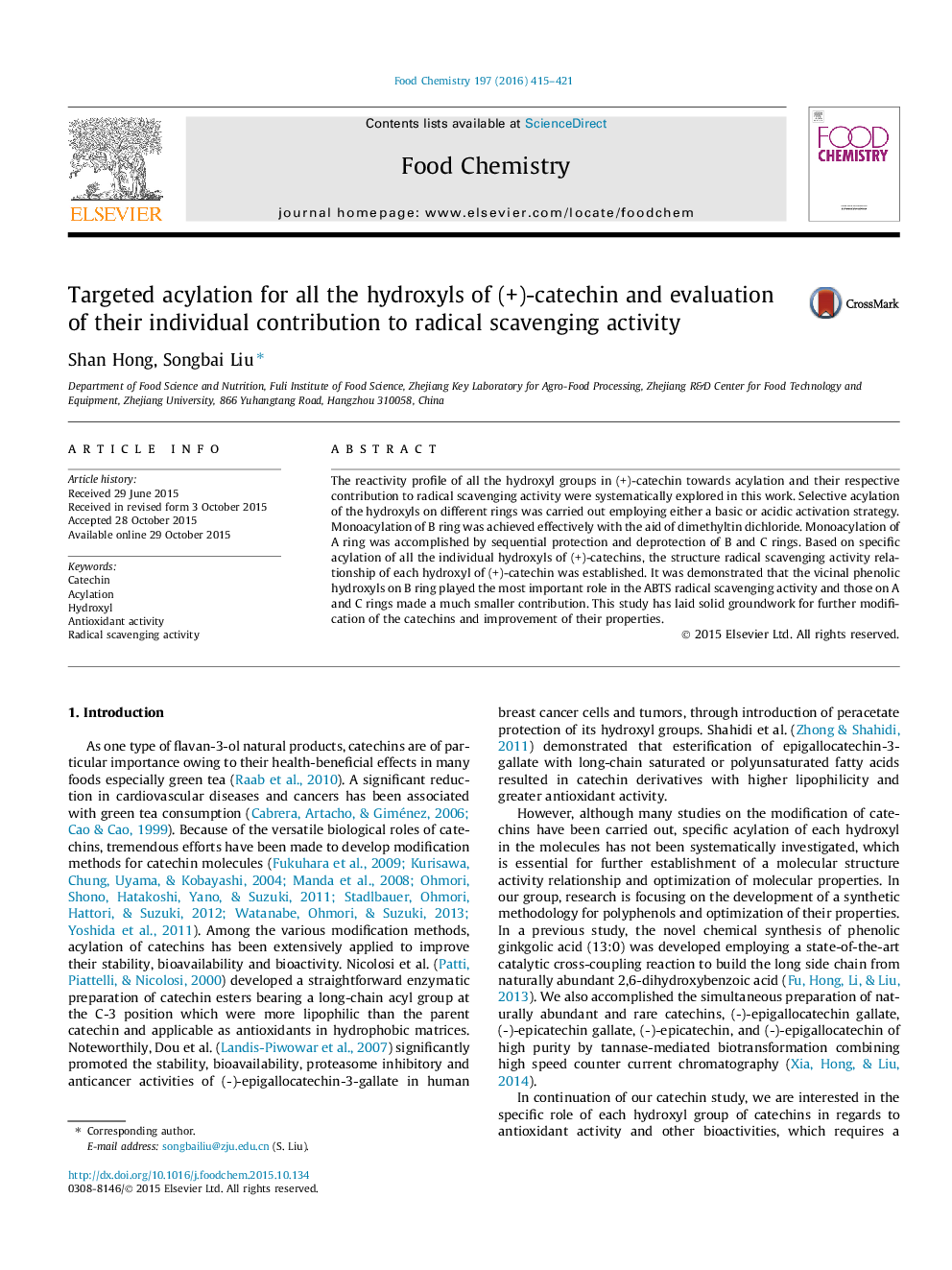| Article ID | Journal | Published Year | Pages | File Type |
|---|---|---|---|---|
| 1183481 | Food Chemistry | 2016 | 7 Pages |
•Targeted acylation of individual hydroxyl of (+)-catechin.•Establishment of reactivity profile of all the hydroxyl groups in (+)-catechin.•Establishment of profile of radical scavenging activity of all the hydroxyls.•Detailed mechanistic rationalization of origin of radical scavenging activity.
The reactivity profile of all the hydroxyl groups in (+)-catechin towards acylation and their respective contribution to radical scavenging activity were systematically explored in this work. Selective acylation of the hydroxyls on different rings was carried out employing either a basic or acidic activation strategy. Monoacylation of B ring was achieved effectively with the aid of dimethyltin dichloride. Monoacylation of A ring was accomplished by sequential protection and deprotection of B and C rings. Based on specific acylation of all the individual hydroxyls of (+)-catechins, the structure radical scavenging activity relationship of each hydroxyl of (+)-catechin was established. It was demonstrated that the vicinal phenolic hydroxyls on B ring played the most important role in the ABTS radical scavenging activity and those on A and C rings made a much smaller contribution. This study has laid solid groundwork for further modification of the catechins and improvement of their properties.
